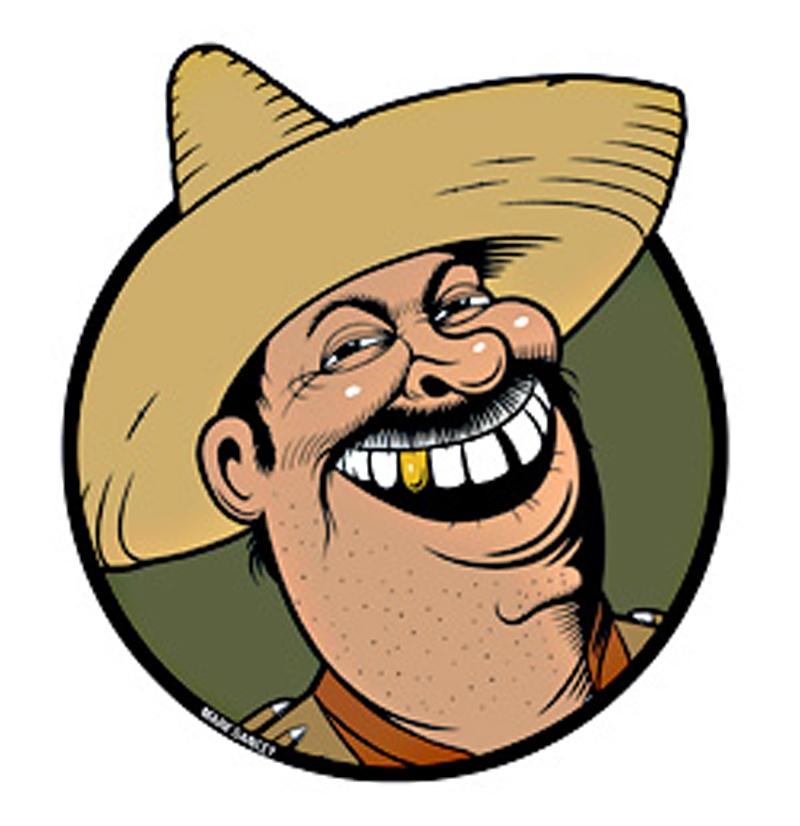Dear Mexican,
A few years ago, I moved to Tucson. In said city, I noticed that there were little piles of stuff accumulated on the medians of the main roads. It looks like what was Dia de la Muertos paraphernalia—I’m not so gringo as to not know what’s up. These little piles of beads—sometimes piles big enough to have bikes—are obviously memorials to deceased family and friends. My question is this: Why the need to litter the medians or roadsides?Down Under, Mexicans BlowDear DUMB,
“Paraphernalia”? I hope that’s what you call the tombstones of your relatives—actually, I hope you don’t, because that just means you’re even more of an insensitive baboso than you currently are. Primeramente, despite the strenuous efforts of hipsters, Día de los Muertos (that last word is masculine—hence, the use of the masculine singular definite article el instead of the la you used. How gringo of you!) is actually a solemn holiday—everything used for a display has a personal meaning not easily purchased at Party City. As I’ve written before, Mexicans have a much-more cordial relationship with Death than gabachos, so descansos commemorating accidents can stay up for years in Mexican neighborhoods and no one gets their chonis in a bunch like you have. How is remembering someone “littering”? As long as it’s not on private property, why does a roadside memorial bother you? May a pigeon perch on your cenotaph!There seem to be a lot of questions on your take of what’s Mexican and why Mexicans do this or do that—my question is on heritage, Mr. Mexicano. My last name, Anguiano, is from a little village in Spain. I notice how it sounds and how it seems to be closely related to Arabic. Now, I learned that Arabs came to Spain at one time—could there be a chance that all Mexicans originated from Arabic peeps? I don’t know much—just like to have your take on it?Askin’ Arellano about AnguianoDear AAAA,
You don’t know much? You at least know your surname is habitational, which is more than most Mexis know about their apellido. And you also know that the Moors invaded Spain and infiltrated supposedly pure Spanish bloodlines far and wide. But Arabic heritage only went so far—yes, we worship a virgin with a partly Arabic name, but Anguiano’s home province of La Rioja was part of al-Andalus for only a few centuries until retaken by Spaniards in the 10th century. That’s when the word “Anguiano” first entered Hispanic chronicles, and the name for the village of the same name was chosen specifically because of its Latin origins—those are lost to history, but we can safely assume it had something to do with snakes, since the word angui is the singular form of snake in Latin. Maybe Anguiano means “snake man”? Eh, post hoc pendejo propter hoc.GOOD MEXICAN OF THE WEEK: La Bloga is the country’s premier Chicano literary blog, a rotating collection of authors who review books, pen essays and original works, report on news, post interviews with authors, and show the world America’s rich Chicano/Latino literary traditions. I’d be remiss in this plug if I didn’t mention one of the contributors: Daniel Olivas, whose recently released The Book of Want by the University of Arizona Press is a fantastic short novel chronicling the lives of a family just like any other gabacho clan—except they’re Mexican and their matriarch visits from the other side. Run, DUMB! Bookmark labloga.blogspot.com and read diario!garellano@seattleweekly.com







